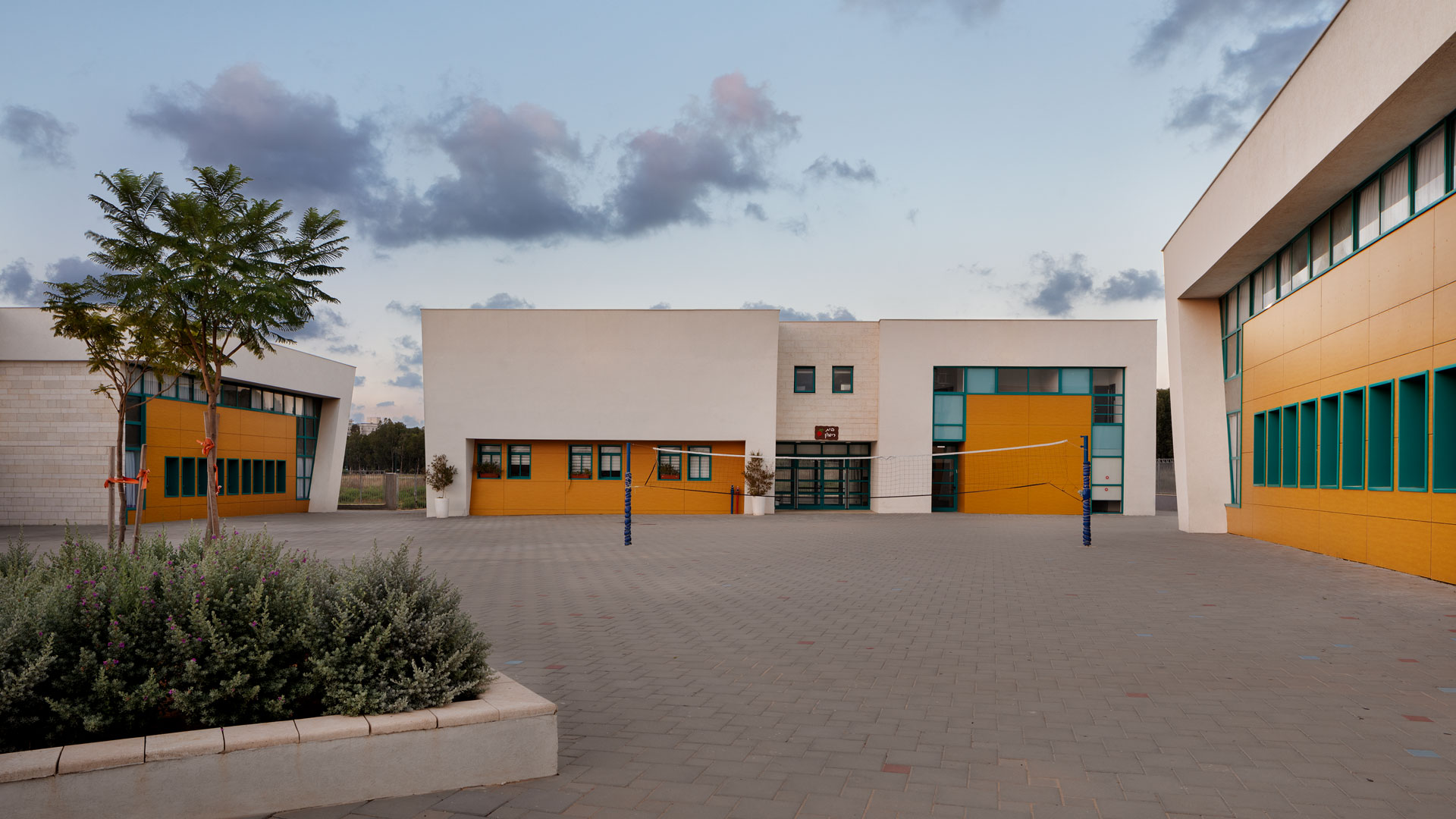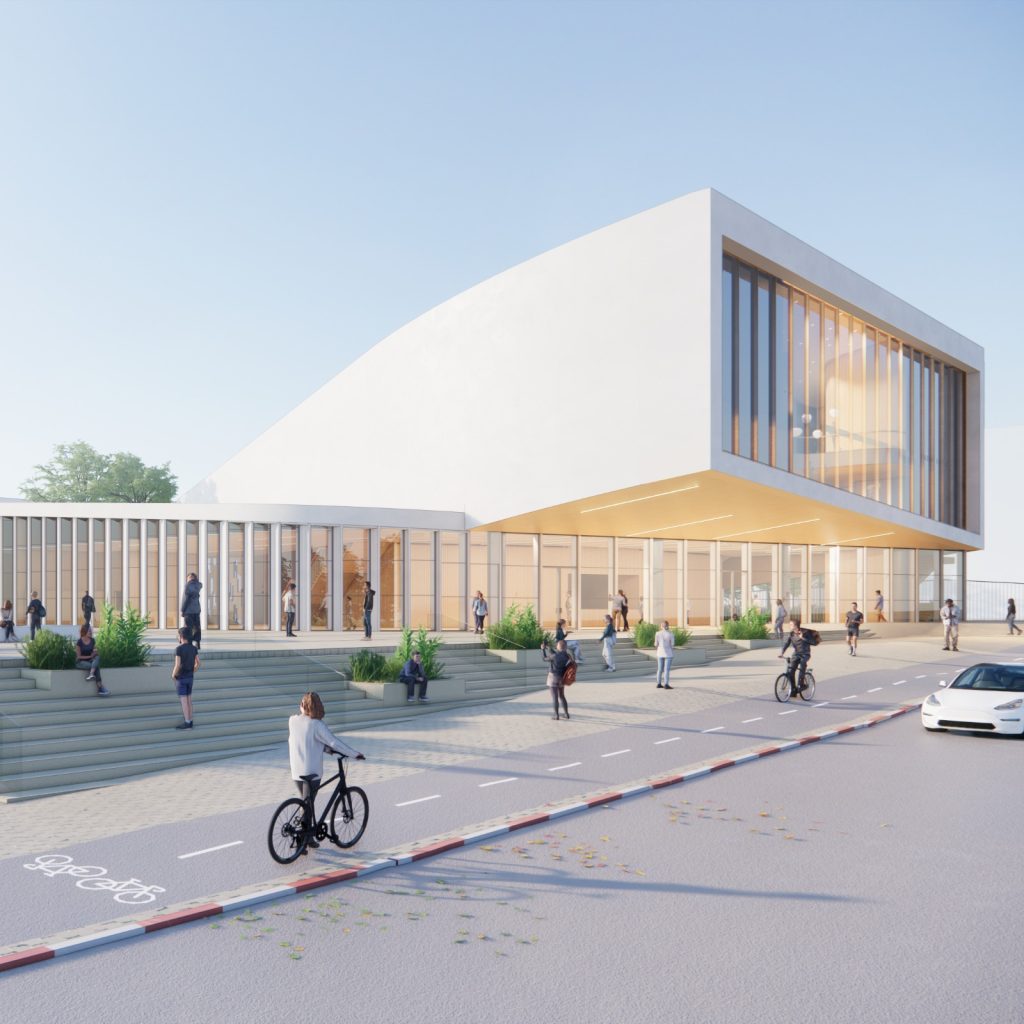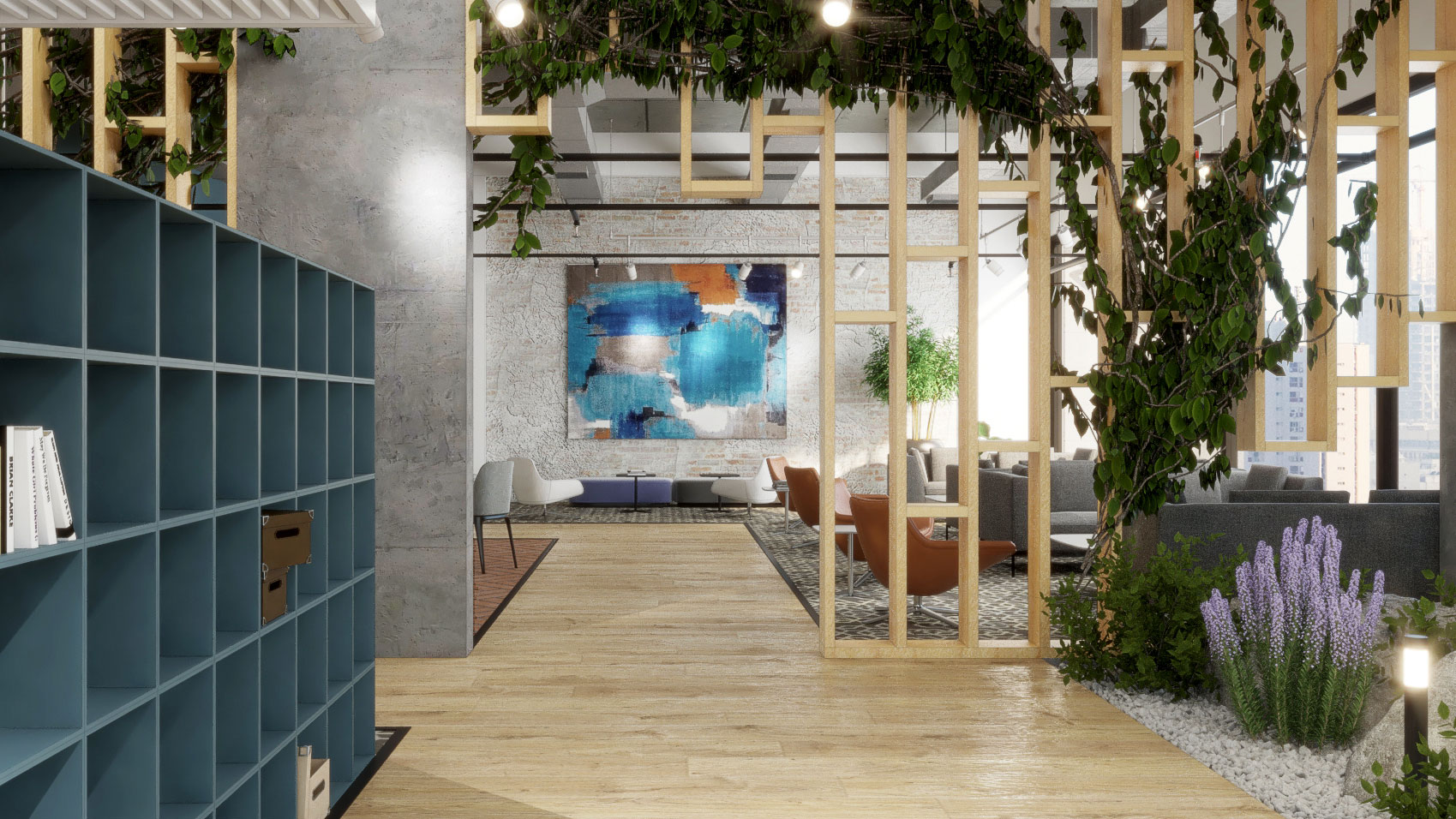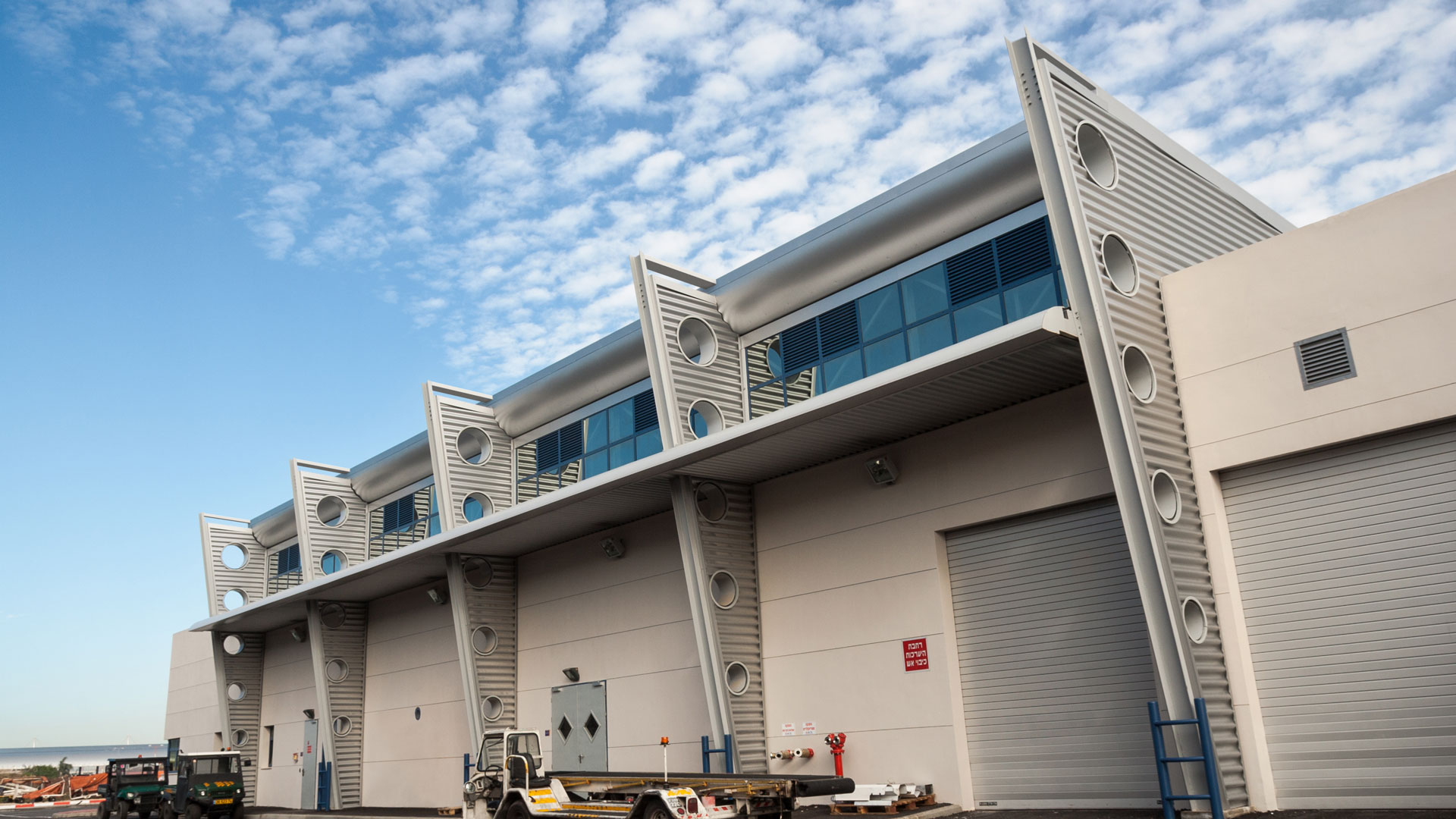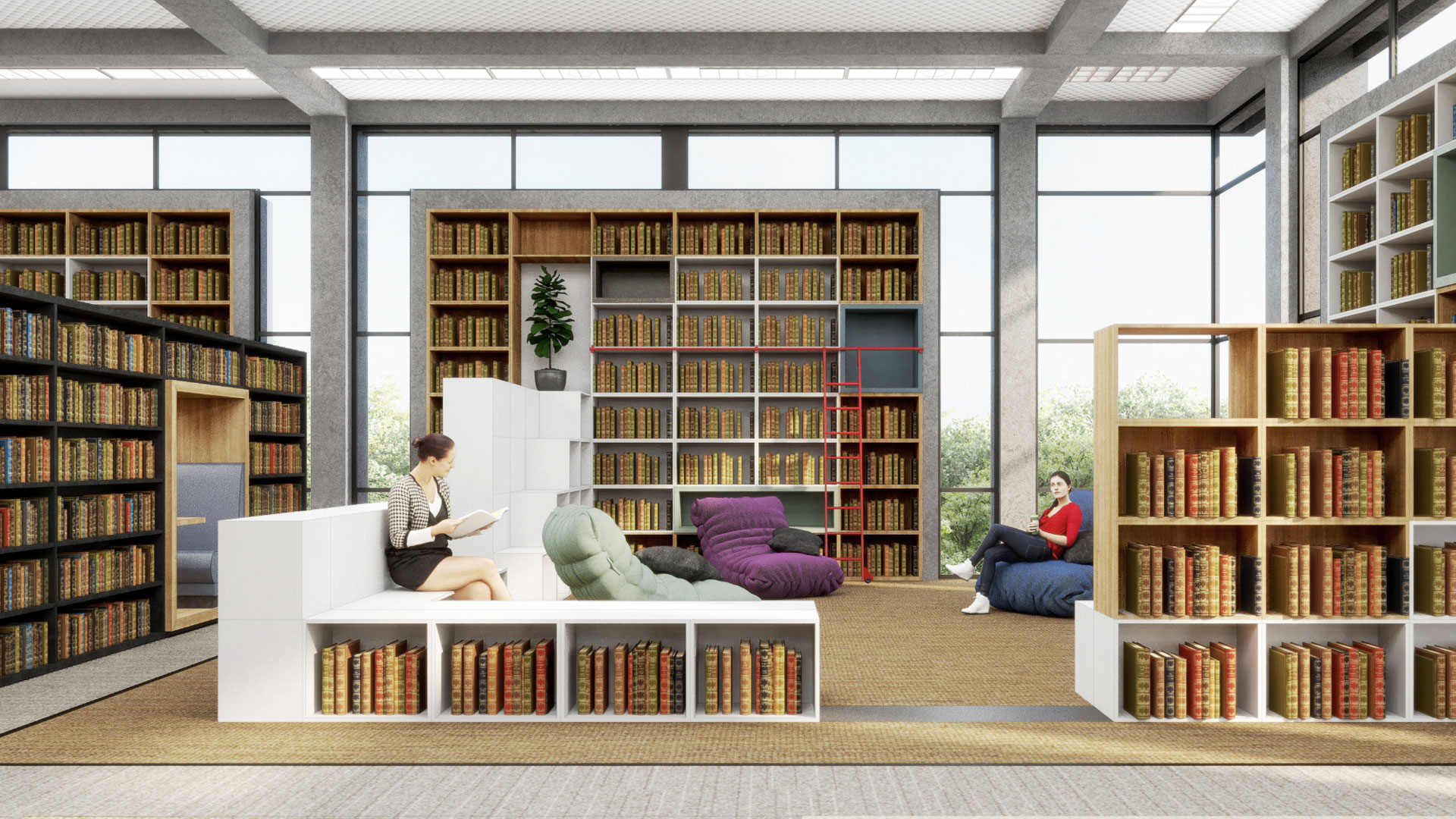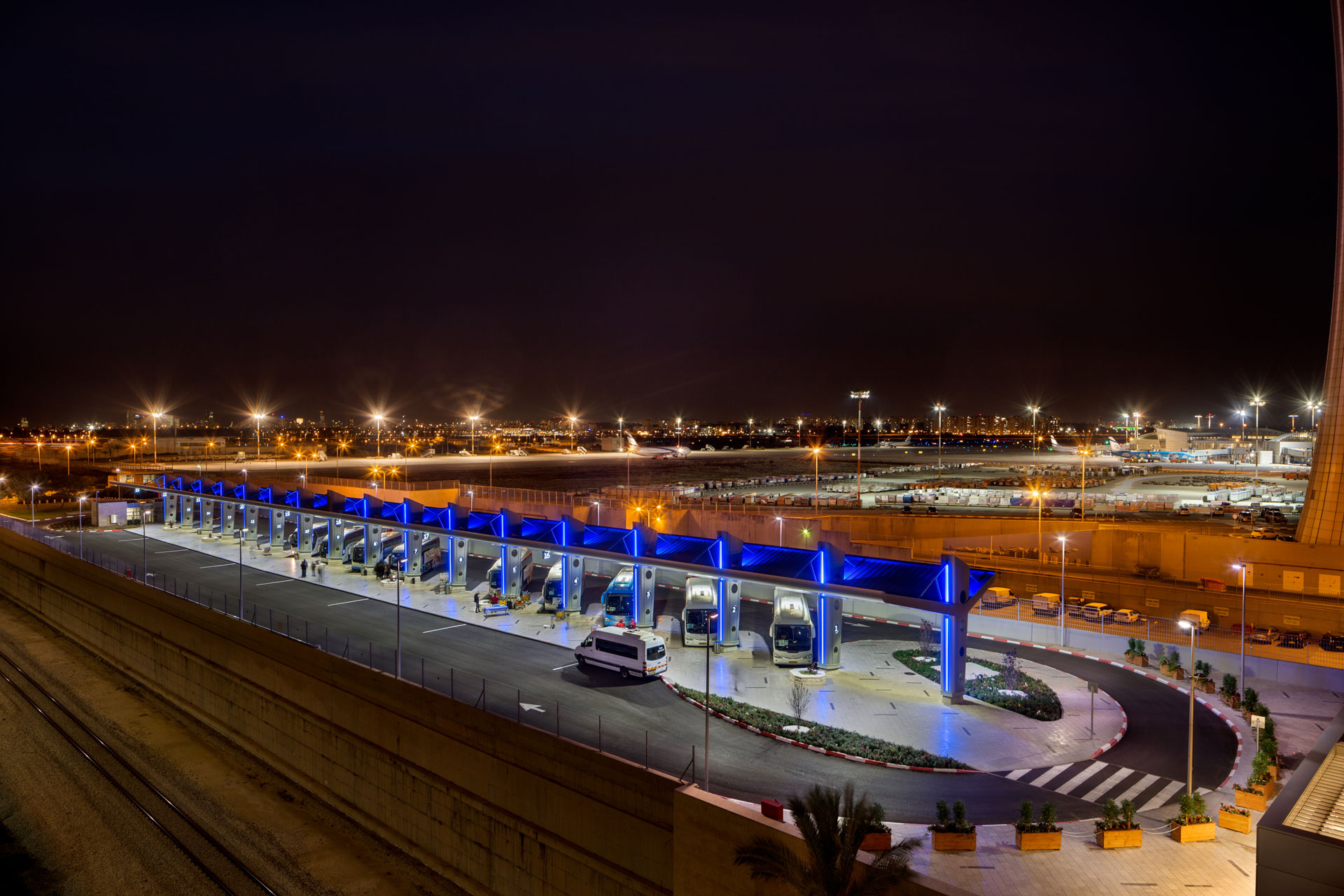The Need
The campus answers the educational and recreational needs of east Netanya’s population, which is home to more than 50,000 residents.
The site includes Sefi Rivlin Community Center, a multipurpose 350-seats auditorium and an education campus with 48 classrooms, divided among two schools – an elementary (primary) school and middle school.
The Vision
The vision emphasizes an inviting and pleasant design, combining colorful elements, friendly visuality and blocks shaped in interesting forms. Additionally, in order to accommodate future changes in learning methods, the design is flexible to any necessary amendments.
In a distinctly urban neighborhood, this public site stands out in its unique construction, distinguishing itself from other buildings around it.
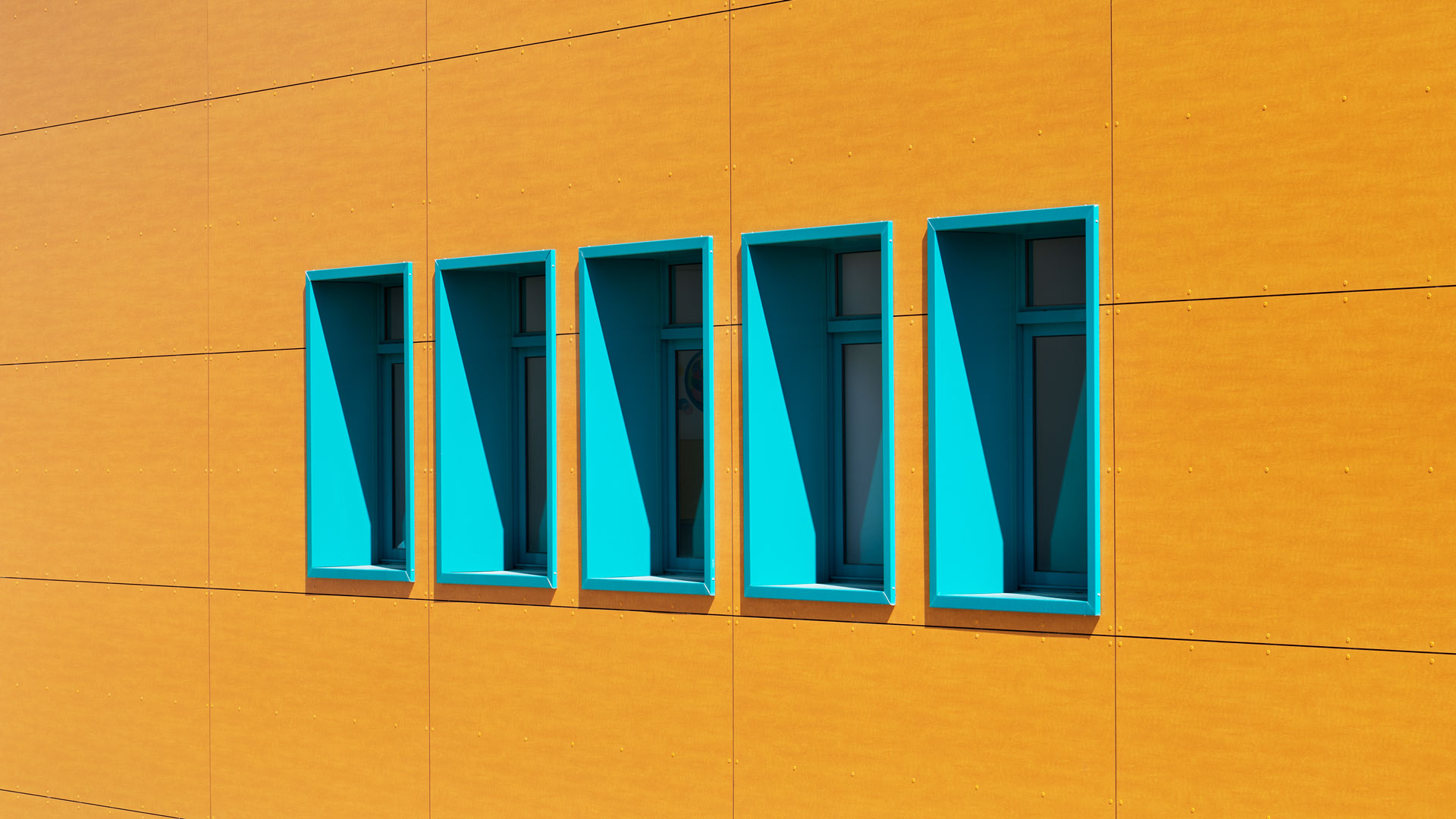
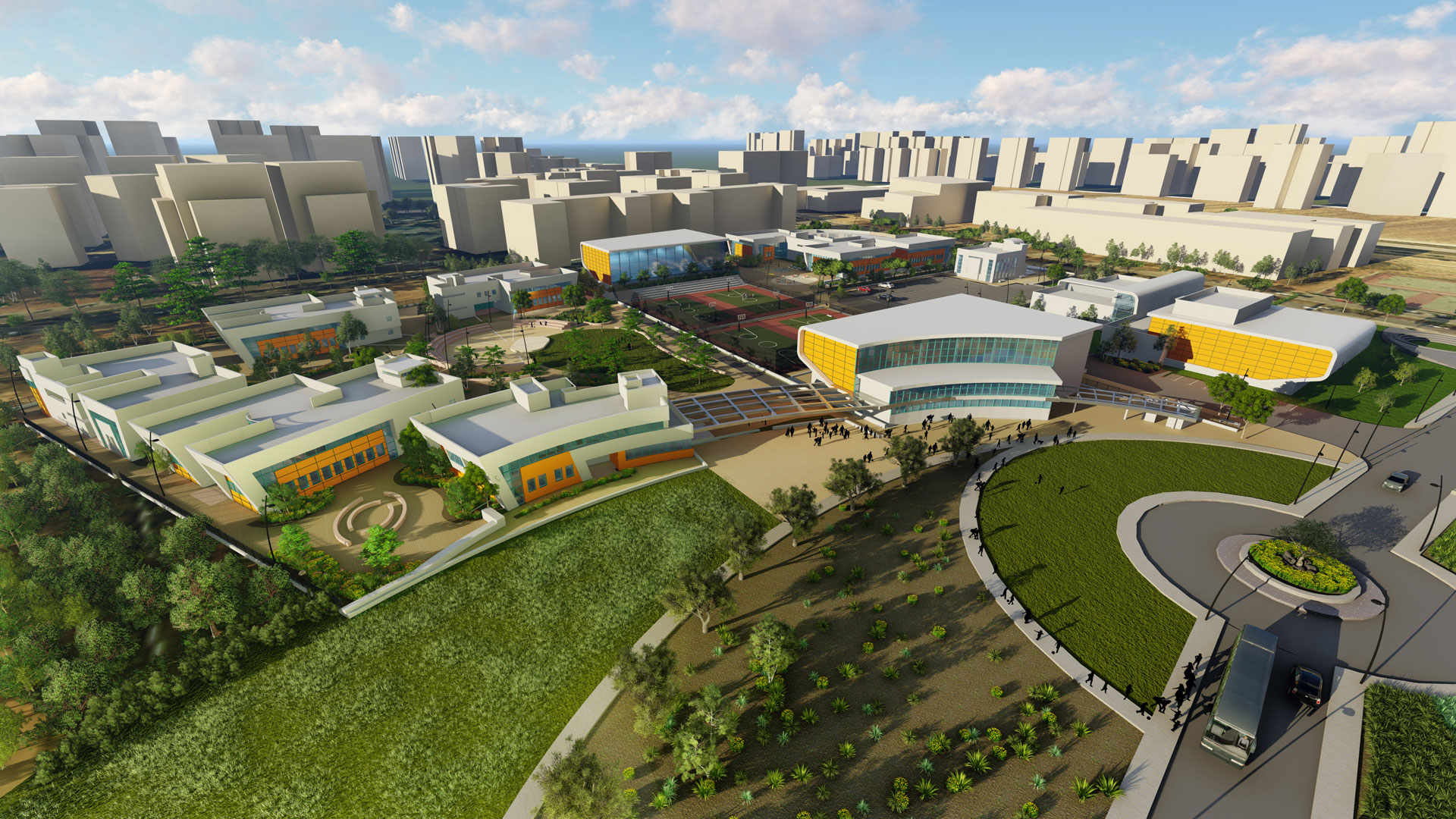
The Design
The construction plan spans the area between Tom Lantos Street to the west, which is the north-south backbone of the Ha’sharon Campus, and the Netanya Academic College to the east.
Along this axis, a square shared by the college and middle school was constructed, which also acts as the students’ drop-off and pick-up area and as an entrance point to the shared parking lot of the middle school and community center. An internal north-south axis connects to this square that is meant to link between the residents of the southern neighborhoods to their neighbors in the north.
The design was carried out following the principles of sustainable construction and in a climate-centric manner, which emphasizes the placement of the site’s building’s in a north to south orientation, natural lighting, natural airing, energy preservation, etc.
The education campus was planned and executed in several stages. The group of buildings was designed in a way that allowed their intended activities to functionally integrate with one another according to their opening times (the community center makes use of the classrooms and parking area, while the school uses the auditorium and activity spaces).
The construction plan of the campus included a strip dedicated to physical activity, which is composed of two sports halls located in the southern and northern edges of the strip and two integrated sports fields located between them. This strip spans the area between the two schools and creates a large, shared area between them.
The school’s overall structure emulates a “mini city”, whereas one can find a clear division between the city’s main square and main activity space (whether internal or external) and which supports various “public institutions” for the use of all students such as the library, administration rooms, teaching laboratories, etc. The “street” is the passageways between the different buildings, and the “home”, is the group of classrooms/grade buildings.
The design results in a clear orientation and sense of direction, and contributes to evoking a feeling of security and safety among the students of all ages, which spend most of their day on campus.
The design of the campus’s different buildings supports a common architectural language and makes use of uniform construction materials: white stone/bright plaster, HPL panels and light tin rooftops. The brighter materials are placed as “frames” while the darker materials act as fillings. The aluminium finishing is in blue-green tones, emulating the sea, which Netanya sits by.




